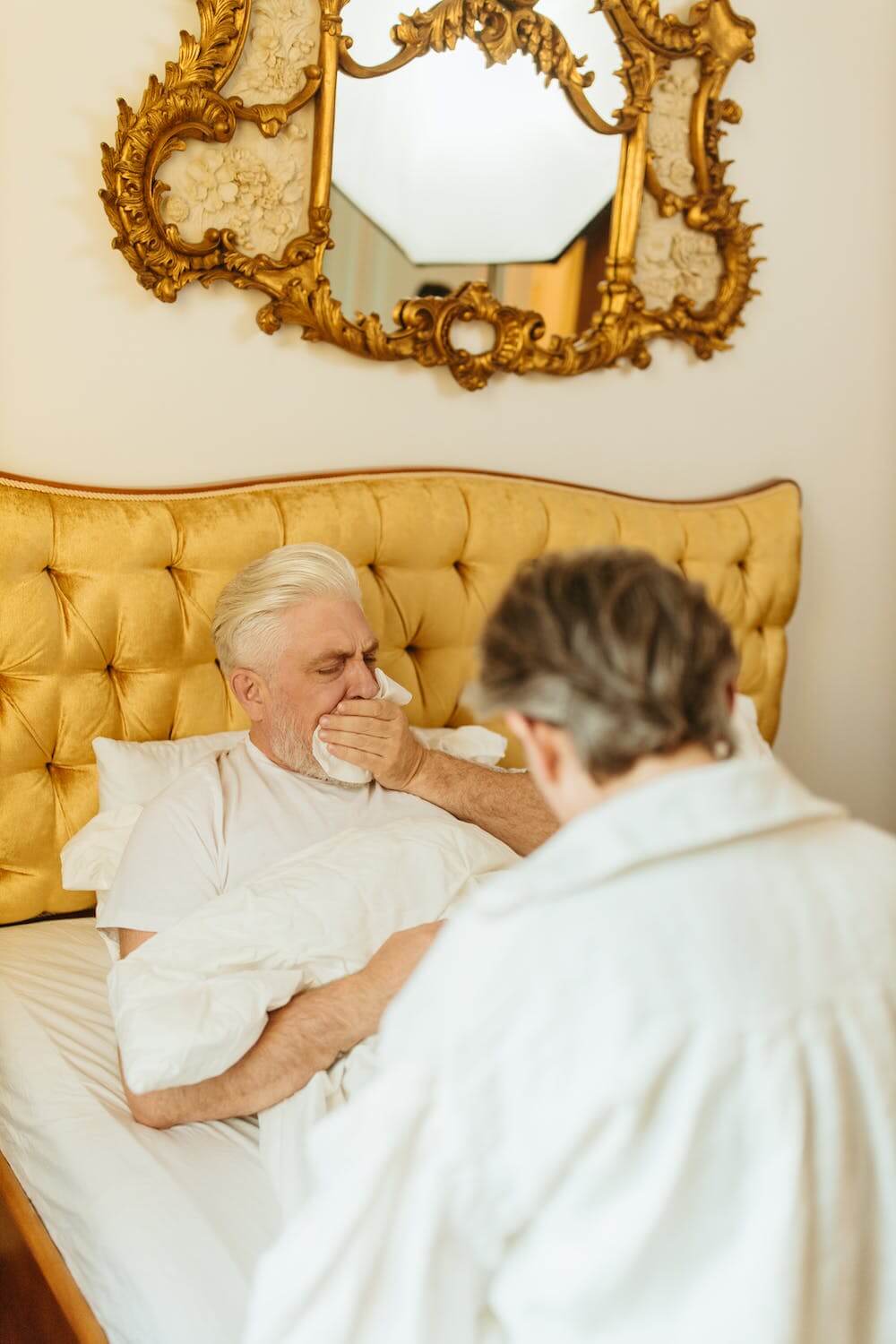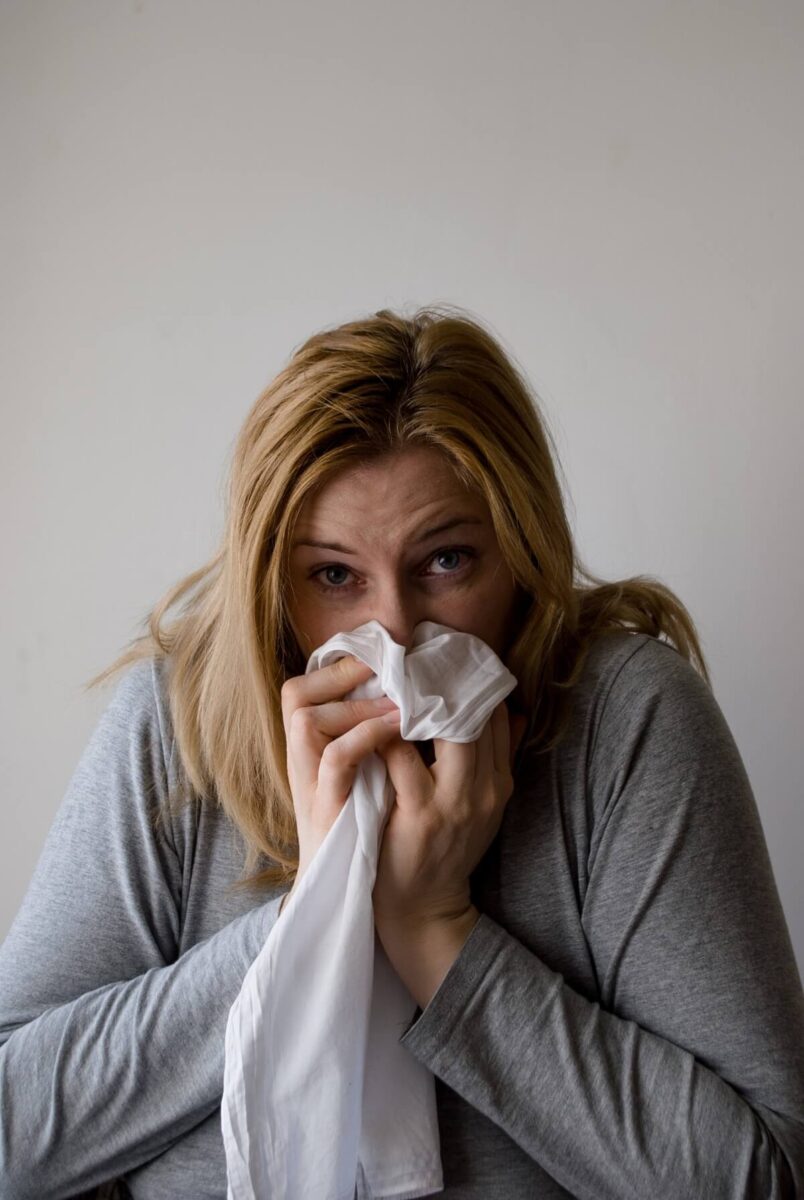Respiratory Therapy at Home
If you could examine all the medical complaints made in your city over a year, it is almost certain that the most common cause of complaint is pain. But if you were to examine what is qualitatively most distressing to patients, then pain might come in second place to breathing difficulties. Pain aggrieves many people, and much medical attention is rightly devoted to lessening pain. But troubled breathing can terrify people in ways that pain can’t, so respiratory therapy is vital to many patients’ health care plans.
There are a wide variety of conditions that cause breathing difficulties: COPD, asthma, sleep apnea, emphysema, lung cancer, pneumonia, COVID-19, and much else. The difficulties themselves might manifest in several ways: shortness of breath, excessive coughing, or tightness of the chest. UCLAHHC’s respiratory therapists work closely with our physicians and other health care staff to learn each patient’s needs and to set a treatment that will help the patient breathe as easily as possible.
What Does a Respiratory Therapist Do?
· Examine the patient, focusing on the chest, vital signs, and the depth and sound of breathing.
· Test the patient’s capabilities, such as with blood oxygen tests and lung function tests.
· Collaborate with the physician to determine the best possible treatment.
· Assign exercises to strengthen the breathing impulse.
· Teach patients and family caregivers how to use breathing equipment.
In an inpatient setting, respiratory therapy often involves helping patients who cannot breathe on their own. This can mean providing oxygen to someone after a serious asthma attack or ventilating a patient with an acute respiratory disease. In a home health care setting, however, therapy involves helping the patient manage her symptoms through exercises and portable equipment.
Pulmonary Rehabilitation
Patients with COPD, lung cancer, and other lung-affecting illnesses will distressingly find their abilities diminished, as they struggle to take in enough oxygen to participate in daily life. Respiratory therapists, however, are trained to implement a process known as pulmonary rehabilitation (PR), which can help patients maintain their abilities and aid in recovery.
Patients who engage in PR will undergo a variety of treatments:
· Strengthening. Physical conditioning is an important part of respiratory health. Strong legs, arms, and core muscles mean that less effort is needed for daily activities, resulting in less labored breathing when up and about.
· Lung optimizing. Exercising the diaphragm and other breathing muscles improves lung function and minimizes the risk of infections and other complications.
· Breathing techniques. Yoga practitioners know the value of thoughtful, focused breathing; so do respiratory therapists. These techniques can calm the patient in a crisis and lessen the need to cough.
· Equipment use. Oxygen supplements are necessary for some patients to live at home, but patients must be trained in their use. The therapist will advise the patient and her family caregivers on how to use her oxygen supply device safely, enhancing her independence.
· Psychological counseling. Lung conditions are highly distressing for the patient and can cause depression or anxiety. UCLAHHC’s therapists know the signs of such emotional problems and can help patients find mental support.
Before beginning PR, patients are tested to determine their base capabilities. These might be breathing tests, stress tests, or walking tests. Then therapy, supervised by the therapist or our skilled nursing practitioners, persists for several weeks. After, the same tests are administered again to see if lung function is improved. Patients who undergo PR have a better prognosis and enjoy a better quality of life than those who don’t. They are hospitalized less often with acute breathing problems, they enjoy their day-to-day lives more, and they have fewer complaints, so UCLAHHC often encourages PR for our respiration-troubled patients.
Respiratory Infection Treatment
In the wake of the COVID-19 pandemic, we are all acutely aware of how much harm respiratory infections can inflict upon us. But these afflictions have troubled us for a long time and are especially of concern for people with impaired lung function.
There are a wide variety of respiratory infections. These are but a few:
· Common cold. We’ve all had this one. Usually not a cause for worry, but consider contacting a doctor if symptoms last longer than ten days.
· Laryngitis is an infection of the voice box. It makes speaking difficult or even impossible. Treatment is easy: don’t speak and drink lots of water.
· Epiglottitis. This infection causes swelling at the top of your breathing tube. It can be dangerous: a too-swollen epiglottis can hinder breathing. IV hydration therapy can help until the patient can swallow without difficulty.
· Sinusitis causes pain, headaches, fevers, and coughing. Most cases resolve themselves in about five days, but contact a doctor if symptoms persist.
· Pharyngitis, more simply known as a sore throat, afflicts us all from time to time. If it lasts for longer than a week or so, it may be caused by the Streptococcus bacterium and need antibiotics to treat.
· Bronchitis, in contrast to the rest of this list, is a lower rather than upper respiratory infection. It causes a persistent cough as lung airways fill with mucus.
Both viruses and bacteria can cause these infections. Most such infections—about 90%—are caused by viruses; viral respiratory infection treatment involves managing symptoms and, in rare severe cases, antiviral medication. Bacterial infections tend to be more troublesome and bother the patient for longer; antibiotics will probably help if a bacterial infection is diagnosed.
There is no simple way to tell if a person is suffering from a viral or bacterial infection. Broadly speaking, viral infections come on quickly, whereas bacterial infections build up more slowly, but by no means is this a surefire diagnostic metric. A concierge physician visiting a sick patient will have his suspicions and may order a test to precisely identify the infection, after which precise treatment can proceed. In any case, even a cold might be a cause for concern for a patient suffering from COPD or lung cancer, so even minor complaints should be referred to a doctor.
But prevention is always better than cure. The COVID-19 pandemic has taught those of us working in health care just how easily infection can spread and disrupt medical efforts even in wealthy nations. To protect our patients and ourselves, UCLAHHC workers follow strict guidelines to prevent the spread of infection: we wear masks and gloves in patients’ homes, sanitize regularly, use touch-free bins to dispose of supplies, and trace contacts closely if one of us falls ill. Only through vigilance can we offer quality health care rather than spreading illness ourselves.


